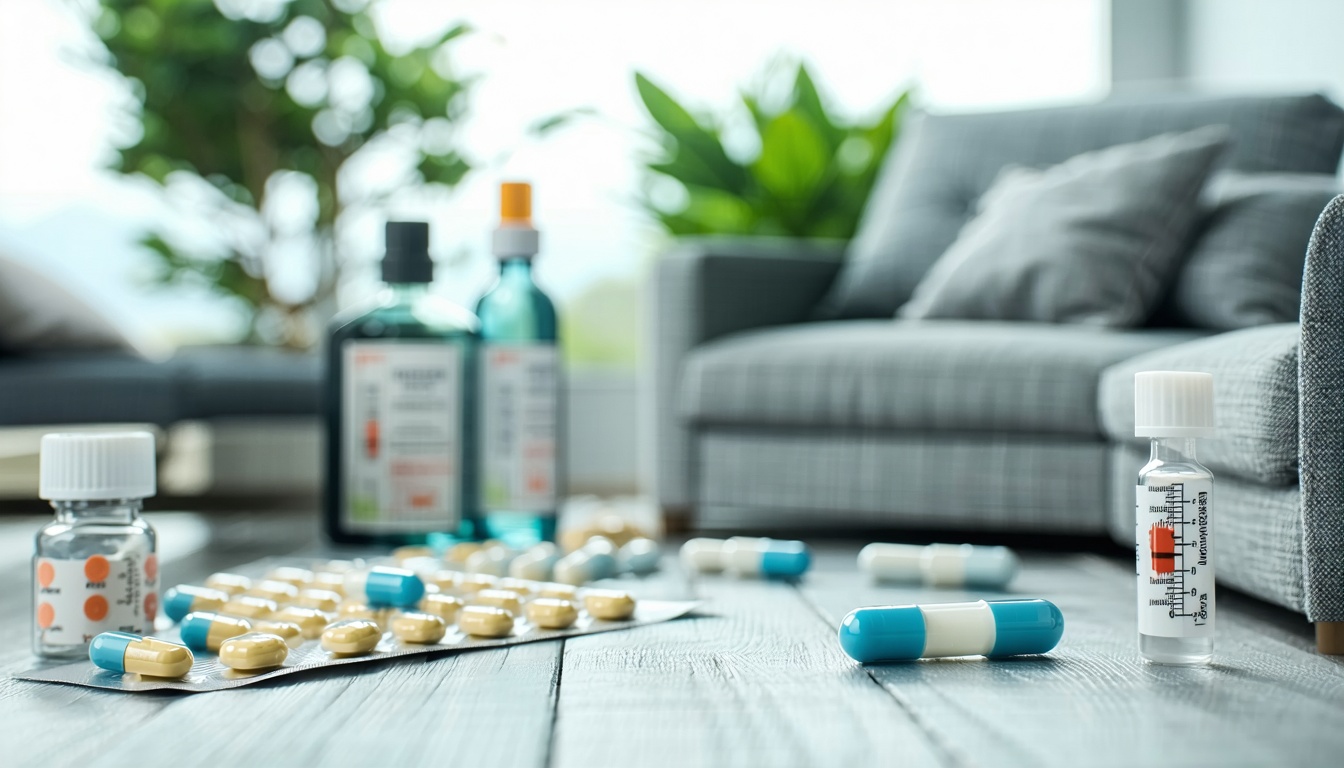Why Choose Genesis Treatment Services
An Introduction to Genesis
At Genesis Treatment Services, we specialize in providing high-quality addiction treatment tailored to the unique needs of individuals transitioning from illicit opioids to clinic-based treatment. Our focus is on helping clients achieve full recovery and enabling them to live self-directed lives, as emphasized by the Substance Abuse and Mental Health Services Administration (SAMHSA). Research shows that a comprehensive approach that combines medication with therapy effectively sustains recovery and reduces relapse potential, thereby decreasing the risk of contracting infections like HIV or hepatitis C.
We are proud to offer a wide range of programs designed to meet the diverse needs of our clients. Our dedicated team is committed to creating a supportive environment where individuals can heal and thrive.
Our Approach to Addiction Treatment
At Genesis, we adopt a “whole-patient” approach to treatment, ensuring that every aspect of a person’s recovery is addressed. This includes medication-assisted treatment (MAT) for Opioid Use Disorder (OUD). Our methods recognize the importance of combining medications, such as buprenorphine, methadone, and naltrexone, with counseling and behavioral therapies SAMHSA.
These medications are designed to normalize brain chemistry, alleviate cravings, and restore normal bodily functions without the harmful effects usually associated with opioid use. By tailoring treatment plans to individual needs, we help our clients achieve sustained recovery and overall well-being.
For those considering treatment, we offer valuable resources to help facilitate the transition. Our programs incorporate evidence-based treatments and provide access to knowledgeable professionals who guide clients through the recovery process. To learn more about the role of specific medications like methadone, visit our article on understanding the role of methadone in opioid use treatment. For a comprehensive view on what to expect during treatment, consult what to expect from suboxone treatment at a licensed clinic.
In summary, choosing Genesis Treatment Services means opting for a compassionate, scientifically-informed approach to overcoming substance use disorders. We focus on building a foundation for long-term sobriety and stability through medication, therapy, and ongoing support. For insights on how medication works alongside counseling, explore our piece on using medication and counseling together: why it works to understand how we help clients achieve their recovery goals effectively.
Transitioning from Illicit Opioids
Transitioning from illicit opioids to clinic-based treatment is a crucial step in recovery. At Genesis Treatment Services, we recognize the complexities of this process and aim to provide comprehensive support for those seeking to make this transition.
Understanding Substance Use Disorders
Substance use disorders (SUD) involve the compulsive use of substances despite harmful consequences. They affect a person’s ability to control their use of substances, leading to significant disruptions in various aspects of life. Understanding these disorders is essential for individuals and their loved ones pursuing recovery.
Medications for Opioid Use Disorder (MOUD) have been shown to be particularly effective in facilitating recovery. According to the CDC, counseling and psychosocial support enhance the benefits of these medications, making them a crucial part of the treatment strategy. The combination of medication, therapy, and support creates a robust framework for recovery.
Medications for Opioid Use Disorder
Medications used in treating Opioid Use Disorder help normalize brain chemistry, alleviate cravings, and sometimes prevent withdrawal symptoms. As highlighted by the CDC, the decision to incorporate medication into recovery is a personal medical choice, but the evidence supporting the effectiveness of these medications for successful recovery is strong.
Types of Medications for Opioid Use Disorder:
| Medication | Description | Usage |
|---|---|---|
| Methadone | Long-acting opioid that decreases cravings and withdrawal symptoms. | Administered in both inpatient and outpatient settings, typically in doses not exceeding 40 mg in 24 hours on the second day. |
| Buprenorphine | Partially agonist that can be provided in physician offices. | Prescribed in doses of 4 to 12 mg sublingually, significantly increasing accessibility to treatment. |
| Naltrexone | Blocks the effects of opioids and reduces cravings. | Effective for individuals who have stopped using opioids, aiding in maintaining sobriety. |
Medications for Opioid Use Disorder are safe for long-term use, potentially for a lifetime, though medical supervision is essential before any discontinuation.
At Genesis Treatment Services, we understand that transitioning from illicit opioids requires a tailored approach that may involve medications like methadone or buprenorphine. Together with supportive counseling, these solutions foster a pathway towards lasting recovery. For further insights on the specifics of medication usage in treatment, explore our articles on understanding the role of methadone in opioid use treatment and what to expect from suboxone treatment at a licensed clinic.
Accessing Evidence-Based Treatments
Expanding Treatment Options
At Genesis Treatment Services, we understand the importance of providing a variety of evidence-based treatments for individuals transitioning from illicit opioids to clinic-based treatment. The treatment for Opioid Use Disorder (OUD) is not one-size-fits-all; it must be tailored to the needs of each individual. According to the CDC, expanding access to medications for opioid use disorder (MOUD) is essential. Effective treatment can vary in terms of setting, form, and duration, adapting to the unique circumstances of each patient (CDC).
We offer an array of medications such as buprenorphine, methadone, and naltrexone. These treatments play a critical role in normalizing brain chemistry, relieving cravings, and helping individuals regain control of their lives. To assist in understanding the differences and benefits of these options, we have outlined the medications available below:
| Medication | Benefits |
|---|---|
| Buprenorphine | Can be prescribed in physician offices, improving accessibility |
| Methadone | Effectively restores normal body functions without harmful effects |
| Naltrexone | Helps reduce cravings and prevent relapse |
To explore more about specific medications, check our articles on understanding the role of methadone in opioid use treatment and what to expect from suboxone treatment at a licensed clinic.
Tailoring Treatment to Individual Needs
Personalization in treatment is paramount in our approach at Genesis Treatment Services. We recognize that each individual faces unique challenges, and successful treatment requires a strategy that is as unique as the person receiving it. Research conducted by SAMHSA confirms that combining medication and therapy is effective in treating substance use disorders and aiding in sustained recovery (SAMHSA).
We assess each client’s situation in-depth to create personalized treatment plans. This involves evaluating medical history, substance use patterns, and personal goals for recovery. As a part of this personalized care, we ensure to:
-
Consult on Medication Options: Assist clients in making informed decisions regarding their medication use, emphasizing that this is a personal medical decision.
-
Integrate Therapy: Combine medication use with various therapeutic approaches to address the psychological, emotional, and social factors contributing to substance use.
-
Monitor Progress: Regularly evaluate the effectiveness of the treatment plan and make necessary adjustments to better support recovery.
Our commitment to individualized care is at the core of our mission to provide the highest quality addiction treatment, counseling, and therapy. For insight into how medication-assisted treatment (MAT) supports long-term stability, refer to our article on how MAT supports long-term sobriety and stability.
As we help individuals navigate their recovery journey, our focus remains on fostering a supportive environment where they can successfully transition from illicit opioids to a healthier, fulfilling life.
Importance of Medication in Recovery
Role of Medications in Opioid Use Disorder
Medications play a critical role in the treatment of Opioid Use Disorder (OUD). Options such as buprenorphine, methadone, and naltrexone help to normalize brain chemistry, alleviate cravings, and restore normal body functions without harmful effects. These medications are effective for short-acting opioids like heroin and semi-synthetic opioids like oxycodone. Each medication is safe for long-term use and can be part of a treatment plan that lasts for a lifetime; however, medical consultation is essential before discontinuing any medication (SAMHSA).
Buprenorphine is particularly notable because it’s one of the first medications for treating OUD that can be prescribed or dispensed in physician offices, significantly improving accessibility for individuals seeking help (SAMHSA). Additionally, the FDA has approved intramuscular extended-release naltrexone, which effectively treats both OUD and Alcohol Use Disorder (AUD) (SAMHSA).
The success of these medications is bolstered when combined with holistic approaches, such as counseling and behavioral therapies. By taking a “whole-patient” approach, we can better support individuals during their recovery journey, addressing both the physical and psychological aspects of addiction.
| Medication | Purpose | Administration Method |
|---|---|---|
| Buprenorphine | Treats Opioid Use Disorder | Prescribed in physician offices |
| Methadone | Reduces cravings and withdrawal | Administered at certified clinics |
| Naltrexone | Prevents relapse in OUD and AUD | Intramuscular injection |
Personal Decision on Medication Use
The decision to incorporate medication into the recovery journey is deeply personal. Each individual’s medical and life circumstances will influence their choice. Evidence supporting the effectiveness of medications in aiding recovery from addiction is robust. Not only do these medications assist in normalizing brain function, but they also relieve cravings and may prevent withdrawal symptoms (CDC).
Our approach at Genesis Treatment Services emphasizes the importance of informed decision-making. We believe that by providing comprehensive information and support, individuals can make educated choices about their treatment options. Patients may find that using medication in conjunction with counseling yields significant benefits. For more insights into why these combined methods work effectively, see our article on using medication and counseling together: why it works.
Ultimately, our goal is to tailor treatment to meet the unique needs of each patient, ensuring they have the necessary support for transitioning from illicit opioids to clinic-based treatment and achieving lasting recovery. We are committed to providing compassionate care and evidence-based solutions for everyone seeking help.
SAMHSA’s National Helpline
Support for Substance Use Disorders
We recognize the challenges faced by individuals struggling with substance use disorders, especially those transitioning from illicit opioids to clinic-based treatment. SAMHSA’s National Helpline, available at 1-800-662-HELP, serves as a vital resource for individuals seeking assistance. This helpline provides access to information, referrals, and support for those grappling with opioid addiction. By reaching out to the helpline, individuals can find guidance tailored to their needs, as well as connect with local treatment options.
The importance of this support cannot be overstated. The ultimate aim of addiction treatment is full recovery, enabling individuals to lead a self-directed life. According to SAMHSA, a combination of medication and therapy proves effective in treating substance use disorders, sustaining recovery, and minimizing the risks associated with relapse.
Resources for Opioid Addiction
When navigating treatment for opioid addiction, we recommend utilizing the various resources available through SAMHSA. These resources include information about medications for Opioid Use Disorder (OUD), such as buprenorphine, methadone, and naltrexone. These medications work by normalizing brain chemistry, relieving cravings, and restoring normal body functions without harmful effects. Notably, buprenorphine can be prescribed in physician offices, significantly improving treatment accessibility.
Additionally, the resources provided by SAMHSA cover essential aspects of medication-assisted treatment (MAT). By understanding the role of these medications in recovery (understanding the role of methadone in opioid use treatment), individuals can make informed decisions about their path to recovery. It is crucial to acknowledge that while these medications may be safe for long-term use, medical consultation is advised before making any changes to the treatment plan.
The combination of medication and counseling is supported by research, confirming its effectiveness in minimizing relapse potential and aiding in long-term recovery (using medication and counseling together: why it works). For those interested in exploring additional related behavioral therapies, we encourage checking out resources that delve deeper into common misconceptions about MAT and the truth behind them and how MAT supports long-term sobriety and stability.
In summary, we emphasize the significance of reaching out for help and utilizing the available resources, such as SAMHSA’s National Helpline, to support individuals on their journey towards recovery from opioid addiction.
Impact of Opioid Crisis
Evolution of the Opioid Epidemic
The opioid crisis has undergone significant shifts over the years, evolving through three distinct waves. Initially, the first wave saw the rise of non-medical use and addiction to prescription opioid analgesics. This was followed by the second wave, which marked an increase in the use of heroin as individuals sought more accessible alternatives to prescription medications. Most recently, the crisis has shifted towards the third wave, characterized by a dramatic rise in the misuse of illicit synthetic opioids like fentanyl (Nature).
Between 2010 and 2017, deaths from fentanyl and other synthetic opioids surged nearly ten-fold, rising from approximately 3,000 to over 28,466. Synthetic opioids have become nearly twice as common in overdose deaths compared to prescription opioids and heroin, underscoring their extreme potency and low production costs. This situation increases the risk of overdose, especially when these substances are mixed with other drugs, such as heroin (Nature).
The complexity of this crisis is evident, as the number of opioid prescriptions dispensed has decreased, yet the fatalities continue to rise. By June 2021, it was estimated that synthetic opioids were involved in about 87% of opioid deaths and 65% of all drug overdose deaths (American Psychiatric Association).
| Year | Fentanyl Deaths | Total Opioid Deaths |
|---|---|---|
| 2010 | 3,000 | |
| 2017 | 28,466 |
Effective Strategies for Addressing the Crisis
Addressing the opioid epidemic requires a multifaceted approach incorporating a variety of strategies. These include efforts to restrict supply, influence prescribing practices, reduce demand, and minimize harm. Some of the key strategies include:
- Education: Providing information to patients about the risks associated with opioids helps ensure responsible use.
- Increasing Access to Treatment: Expanding treatment options for opioid use disorder (OUD) is critical in helping individuals transition from illicit opioids to clinic-based treatment.
- Naloxone Distribution: Making naloxone available to prevent opioid overdoses is an essential harm-reduction strategy. This life-saving medication can reverse the effects of an overdose if administered promptly.
- Needle Exchange Programs: Implementing these programs offers a way to reduce the health risks associated with injection drug use by providing clean needles and safe disposal options.
With over 2 million individuals suffering from opioid use disorder associated with prescription opioids and nearly 600,000 connected to heroin, effective strategies become increasingly vital (National Academies Press). By working together to understand and implement these strategies, we can create a supportive environment for those affected by the crisis.




